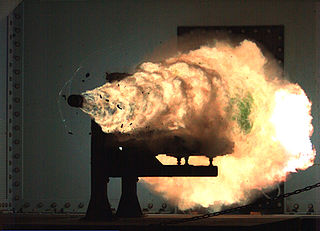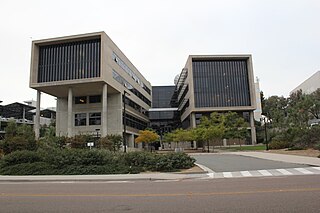
Wireless communication is the transfer of information (telecommunication) between two or more points without the use of an electrical conductor, optical fiber or other continuous guided medium for the transfer. The most common wireless technologies use radio waves. With radio waves, intended distances can be short, such as a few meters for Bluetooth, or as far as millions of kilometers for deep-space radio communications. It encompasses various types of fixed, mobile, and portable applications, including two-way radios, cellular telephones, personal digital assistants (PDAs), and wireless networking. Other examples of applications of radio wireless technology include GPS units, garage door openers, wireless computer mouse, keyboards and headsets, headphones, radio receivers, satellite television, broadcast television and cordless telephones. Somewhat less common methods of achieving wireless communications involve other electromagnetic phenomena, such as light and magnetic or electric fields, or the use of sound.

A railgun or rail gun, sometimes referred to as a rail cannon, is a linear motor device, typically designed as a weapon, that uses electromagnetic force to launch high-velocity projectiles. The projectile normally does not contain explosives, instead relying on the projectile's high kinetic energy to inflict damage. The railgun uses a pair of parallel rail-shaped conductors, along which a sliding projectile called an armature is accelerated by the electromagnetic effects of a current that flows down one rail, into the armature and then back along the other rail. It is based on principles similar to those of the homopolar motor.

The San Diego Supercomputer Center (SDSC) is an organized research unit of the University of California, San Diego. Founded in 1985, it was one of the five original NSF supercomputing centers.
Dedicated short-range communications (DSRC) is a technology for direct wireless exchange of vehicle-to-everything (V2X) and other intelligent transportation systems (ITS) data between vehicles, other road users, and roadside infrastructure. DSRC, which can be used for both one- and two-way data exchanges, uses channels in the licensed 5.9 GHz band. DSRC is based on IEEE 802.11p.

The Mohonk Preserve is a nature preserve in the Shawangunk Ridge, 90 miles (140 km) north of New York City in Ulster County, New York. The preserve has over 8,000 acres (32 km2) of cliffs, forests, fields, ponds and streams, with over 70 miles (110 km) of carriage roads and 40 miles (64 km) of trails for hiking, cycling, trail running, cross-country skiing, snowshoeing, and horseback riding. It is also a major destination for rock climbers, hosting 50,000 climbers each year who enjoy more than 1,000 climbing routes.

The Engineer Research and Development Center (ERDC) is a US Army Corps of Engineers (USACE) research and laboratory organization.
The Unlicensed National Information Infrastructure (U-NII) radio band, as defined by the United States Federal Communications Commission, is part of the radio frequency spectrum used by WLAN devices and by many wireless ISPs.
ComNets, a chair of RWTH Aachen University, is a former university department in Germany working on Mobile Communications. Head of ComNets was Bernhard Walke. Research projects are mainly funded by third parties like national and European boards and communication industries. The research activities of about 40 fully employed research assistants are focused on design and further development as well as quantitative performance analysis of mobile communication systems like GPRS, TETRA, EDGE, UMTS, Next Generation, Dedicated Short Range Communication Systems, Hybrid Systems, Ad hoc and Multi-hop WLAN, HiperLAN/2, HiperMAN, mobile Satellite and High-Altitude Platforms. Stochastic simulation based on emulated protocol stacks and traffic theory are the main analysis methods. Essential results of ComNets' work have been incorporated into the standards ETSI-GPRS, CEN-DSRC, ETSI/HiperLAN/2, IEEE 802.11 e/h/s.
IEEE 802.11p is an approved amendment to the IEEE 802.11 standard to add wireless access in vehicular environments (WAVE), a vehicular communication system. It defines enhancements to 802.11 required to support intelligent transportation systems (ITS) applications. This includes data exchange between high-speed vehicles and between the vehicles and the roadside infrastructure, so called vehicle-to-everything (V2X) communication, in the licensed ITS band of 5.9 GHz (5.85–5.925 GHz). IEEE 1609 is a higher layer standard based on the IEEE 802.11p. It is also the basis of a European standard for vehicular communication known as ETSI ITS-G5.
Digital Video Interactive (DVI) was the first multimedia desktop video standard for IBM-compatible personal computers. It enabled full-screen, full motion video, as well as stereo audio, still images, and graphics to be presented on a DOS-based desktop computer using a special compression chipset. The scope of Digital Video Interactive encompasses a file format, including a digital container format, a number of video and audio compression formats, as well as hardware associated with the file format.
Vehicular communication systems are computer networks in which vehicles and roadside units are the communicating nodes, providing each other with information, such as safety warnings and traffic information. They can be effective in avoiding accidents and traffic congestion. Both types of nodes are dedicated short-range communications (DSRC) devices. DSRC works in 5.9 GHz band with bandwidth of 75 MHz and approximate range of 300 metres (980 ft). Vehicular communications is usually developed as a part of intelligent transportation systems (ITS).

The Arctic Region Supercomputing Center (ARSC) was from 1993 to 2015 a research facility organized under the University of Alaska Fairbanks (UAF). Located on the UAF campus, ARSC offered high-performance computing (HPC) and mass storage to the UAF and State of Alaska research communities.
The United States Department of Defense High Performance Computing Modernization Program (HPCMP) was initiated in 1992 in response to Congressional direction to modernize the Department of Defense (DoD) laboratories’ high performance computing capabilities. The HPCMP provides supercomputers, a national research network, high-end software tools, a secure environment, and computational science experts that together enable the Defense laboratories and test centers to conduct research, development, test and technology evaluation activities.
The David E. Skaggs Research Center (DSRC) is a 372,000-square-foot (34,600 m2) research and office facility for the National Oceanic and Atmospheric Administration (NOAA), located in Boulder, CO. The building includes 698 offices, 20 conference rooms, 98 laboratories and three major computer centers, and has been designed by Fentress Architects.
A connected car is a car that can communicate bidirectionally with other systems outside of the car. This connectivity can be used to provide services to passengers or to support or enhance self-driving functionality. For safety-critical applications, it is anticipated that cars will also be connected using dedicated short-range communications (DSRC) or cellular radios, operating in the FCC-granted 5.9 GHz band with very low latency.

Brett P. Giroir is an American pediatrician. He was formerly the U.S. assistant secretary for health, a four-star admiral in the U.S. Public Health Service Commissioned Corps and an acting Food and Drug Administration commissioner.

Vehicle-to-everything (V2X) describes wireless communication between a vehicle and any entity that may affect, or may be affected by, the vehicle. Sometimes called C-V2X, it is a vehicular communication system that is intended to improve road safety and traffic efficiency while reducing pollution and saving energy.

The Geospatial Research Laboratory (GRL) is a component of the Engineer Research and Development Center (ERDC), a US Army Corps of Engineers (USACE) laboratory organization whose mission is to "Provide science, technology, and expertise in engineering and environmental sciences in support of our Armed Forces and the Nation to make the world safer and better." The laboratory is colocated with the Army Geospatial Center in the Humphreys Engineer Center adjacent to Fort Belvoir. The headquarters is located in Vicksburg, Mississippi, on the site of an antecedent organization, the Waterways Experiment Station. GRL conducts geospatial research, development, technology and evaluation of current and emerging geospatial technologies that will help characterize and measure phenomena within the physical (terrain) and social (cultural) environments encountered by the Army.

Chaceon quinquedens, commonly known as the red deep-sea crab, but sold as Atlantic deep sea red crab, or simply Atlantic red crab or red crab, is a crab that lives in the Atlantic Ocean off the East Coast of the United States and Canada, from North Carolina to Nova Scotia, and in the Gulf of Mexico.

DriveOhio is an initiative within the Ohio Department of Transportation that aims to organize and accelerate smart vehicle and connected vehicle projects in the state of Ohio. It offers to be the single point of contact for policy makers, agencies, researchers, and private companies to collaborate with one another on smart transportation efforts around the state.









